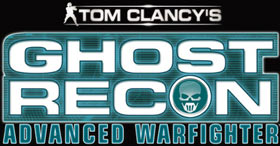The Nintendo Ds (occasionally abbreviated to DS or NDS) is really a dual-screen handheld game console developed and manufactured by Nintendo. It was released in 2004 in Canada, the United States, and Japan. The console features a clamshell design, comparable to the Game Boy Advance SP, with two LCD screens inside - with the bottom 1 being a touchscreen. The Nintendo DS also features a built-in microphone and supports wireless IEEE 802.11 (Wi-Fi) standards, allowing players to interact with each other within short range (10-30 m, depending on conditions) or on the web with the Nintendo Wi-Fi Connection service, which launched later within the console's lifespan. ((
What is really a supercard ?
Essentially, it's a device that plugs into the external port and allows a person to access content from an SD micro-card and, in some cases a CF card. Since it is possible to load 1 of these flash cards (the same kind discovered in cameras, phones, etc.) with just about anything from a personal computer this opens the door to all sorts of possible applications for your DS. This could be music, pictures or a bunch of nintendo games.
At this moment you will find a number of various supercard products obtainable, for both the Nintendo DS, lite (NDS) and Nintendo Gameboy Advance SP (GBA).
Now how do you know which one is right for you, at our review website we will show you in detail, where to get this supercard, which 1 and how to use the software.
Now this opens up endless possibilities does it not ?
First of all we require to know this: "What version NDS do you've?"
This is essential to know so that you buy the right equipment for your NDS.
Basically, do the following :
Check the manufacturing date of your DS. Most likely, in case you have a DS that's purchased in the summer of 2005 to present, you will require the "2nd gen" version of a particular device. If it's prior to that, then you will require the "1st gen" version of the device.
What is NDS homebrew ?
Anything made homebrew for the NDS will require "authentication" by the NDS. It's similar to trying to play some custom made application or games inside your XBOX and realizing it will not work without a modchip. Anything not made or authenticated by the manfucturer will usually need "authentication". This is where all these media carts and PASS ME devices come into play.
What is really a PASS ME device and why are there so many of them ?
A passme device is really a device that has particular programmed code on it which will allow it to authenticate NDS homebrew. These carts have a variety of names, usually based on their manufacturers... i.e. EZ PASS (ezflash organization), SUPER PASS (super card provider), PASSCARD (m3 firm), etc. All in all, they all do the exact same thing inside the lengthy run, authenticate NDS homebrew. Well, this is where it counts. Older (1st gen) DS will require the 1st gen of the PASSME devices. Each organization has a 1st gen pass me device. When you have a 2nd gen NDS or an NDS lite, you'll require the 2nd or 3rd gen PASSME device from the suitable company. How they do it and how advanced they're, varies.These devices are merely authenticators.. they don't carry any media on them, that's what the media carts are for.. which leads us to our next question...
What can be a media cart and what do they do?
Media carts, movie players, etc, all various names for essentially the same concept. You'll notice many different names. Supercard, M3, G6, DS-X, Movie Players, etc. What these carts/adapters do is plug into your GBA slot of your NDS and permit you to .. via either a flash-memory or insertable flash memory (i.e. SD card, CF card, Micro/Mini SD, etc)... play media (movies, music, games, e-books, pictures). Wonderful, is not it?
What do they do? Like I've said, they play media off your flashrom or your insertable memory. It's a terrific concept in the event you think about the fantastic things you may now do with your NDS. You are able to play your music on it, watch movies, watch pictures, read e-books, and run NDS homebrew (should you have your PASS ME device, keep in mind?)





